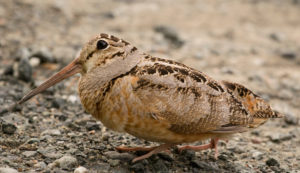 This is one of my favorite times of year. As winter grudgingly releases its grasp on our world, nature creeps back in the most subtle, and wonderful ways. It is amazing to me, as I’m sure it has been to people here for thousands of years, that daily cycles of temperature, driven by increasing dosage of solar radiation and dissolved gases can force sweet sap up into and out from the trunk of a tree. A wonderful example of something that is freely offered to us by nature, as the tree has more than enough for its own needs. After collection of the maple sap, which this year for me amounted to five gallons, comes the exercise in patience which is boiling until syrup.
This is one of my favorite times of year. As winter grudgingly releases its grasp on our world, nature creeps back in the most subtle, and wonderful ways. It is amazing to me, as I’m sure it has been to people here for thousands of years, that daily cycles of temperature, driven by increasing dosage of solar radiation and dissolved gases can force sweet sap up into and out from the trunk of a tree. A wonderful example of something that is freely offered to us by nature, as the tree has more than enough for its own needs. After collection of the maple sap, which this year for me amounted to five gallons, comes the exercise in patience which is boiling until syrup.I have no need for gallons of syrup, and don’t strive to produce much. I can’t consume a lot of sugar, and simply don’t need it in any form. However, the continuation of the process, begun by people who knew of nature and whom I admire for it, is what’s important. Sap can be harvested from any maple, even European ones I’ve learned. I don’t live in a sugar bush, and Woodland Dunes doesn’t have that many sugar maples- mostly reds. So the sap I boil is usually from red maples or the boxelders around my house (yes, even lowly boxelders are maples). It doesn’t take long to harvest the sap I need- I make do with whatever I can get. It’s not a competition for me- it just makes me happy to do it.
I don’t always have large blocks of free time, so boiling is often interrupted, and done over a couple of days. Sometimes it starts in the afternoon and goes into the night and that’s often the best part. It’s often cold, but the run of maple sap coincides with other marvels of spring. Quietly sitting next to a small pan filled with boiling sap in the dark next to the garage, one becomes aware of other changes in the neighborhood as spring advances. Early in the evening, kids can be heard horsing around outside- I’m really glad kids still do that. Not all of them are stuck in front of screens- perhaps some parents “encourage” them to get out of the house as mine did. It was one of the best things they could do for me.
And as twilight deepens, one hears the first robins singing their dusk songs, and the last cardinals ‘chip’ as they come in to the feeder. Geese fly overhead making their way back to Lake Michigan, or the Little Manitowoc. Perhaps a wood frog or two chuckles from a puddle. And then, there is a woodcock beginning his elaborate courtship routine- a very impressive marketing exercise. The chubby little males pick an open spot, their lek, and make a buzzing sound in short bursts. After a few minutes they fly upward, spiraling as they do, making a twittering sound with special narrow stiff feathers on their wings. Finally they swoop downward, warbling as they go. Then they land back at the lek and start over, repeating this from an hour or so or longer depending on how much light is present. They like twilight, not total darkness, and often stop after a while. However, if there’s a full moon, they may go on almost all night. Similarly, they do this again at dawn, stopping when it gets too light.
If another woodcock is close to the lek, they sometimes make kind of a grunting noise as they land, apparently to notify the other bird of their presence. It kind of sounds like they’re arguing over the spot, but the sound is more comical than threatening. Although they are active during the day doing the usual feeding etc., their migration is nocturnal, and courtship is in between (crepuscular). I imagine they are exhausted by the time they are done migrating and mating. It’s interesting that they do their courtship display during migration- one wonders if they are successful, does one of the parents continue on north?
The slow process of syrupping requires us to be patient, and affords an opportunity to slow down. When one slows down, one sees and hears what is missed when we hurry, as we usually are. Sitting in an old lawn chair by an old cookstove with boiling sap at twilight is close to heaven for me. The convergence of maple sap and courtship season is no accident, but it gives us priceless moments, even if they are annual, to absorb nature as it resets itself for the year.
photo- American woodcock by National Audubon Society
